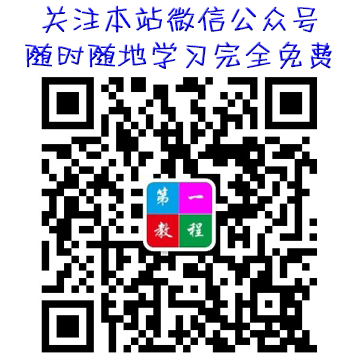2022元旦小学手抄报内容最新
今天是元月一日,这意味我们将迎接新的一年,你准备好迎接元旦了吗?让我们画一幅元旦节手抄报庆祝一下吧!下面小编整理2022元旦小学手抄报内容最新大全,欢迎阅读。

元旦的由来
每年阳历的1月1日为元旦,“元”表示开始,“旦”表示日,即“初识的日子,新的一年的第一天”。现在的元旦是1949年9月27日,第一届中国人民政治协商会议,在决定建立中华人民共和国的同时,也决定采用世界通用的公元纪年法,即我们所说的阳历。元旦,指西元纪年的岁首第一天。
元旦”的“元”,指开始,是第一的意思,凡数之始称为“元”;“旦”,象形字,上面的“日”代表太阳,下面的“一”代表地平线。“旦”即太阳从地平线上冉冉升起,象征一日的开始。人们把“元”和“旦”两个字结合起来,就引申为新年开始的第一天。
元旦的饮食
1、元旦节吃年糕
年糕又称粘粘糕,取年年高之意。在南方用糯米1653制成,北方则为黏黍。年糕的历史悠久,汉朝的米糕已有“稻饼”、“糕”、“饵”、“糍”等名称。6世纪食谱《食次》就有年糕“白茧糖”的制法,北朝《齐民要术》记载了将米磨成粉制糕的方法。
元旦吃年糕盛行于明清时代,尤以南方流行。明末《帝京景物略》卷二记载,正月元旦,“夙兴盥激,吃枣糕,日年年糕”。北方河北嘉靖时《威县志》说当地吃“蒸羊糕”。
2、元旦节吃椒柏酒
椒柏酒,是由花椒和柏树叶浸跑而成的。据古书记载,饮椒柏酒可去病长寿。而元旦节饮椒柏酒的传统习俗,主要在山东历城、浙江嘉兴一代。
历史记载:正旦辟恶酒,新年长命杯。柏叶随铭至,椒花逐颂来。
3、元旦节吃饺子
食毕出门拜年,由近及远,元午直到烧灯后。据此则唐牢丸近似饺子,而且有煮有蒸。宋代食品中出现角子一词。元代把饺子叫做“扁食”,可能出自蒙古语。
明代的饺子如《正字通》所说,称饺饵、粉角、水饺子、蒸烫面饺。此外,还有水点心等叫法,清代北京旗人还把饺子称作“煮饽饽”。元旦吃饺子兴盛于明清时期的北方。
元旦祝福语
1.元旦了,送你一件外套:口袋叫温暖;领子叫关怀;袖子叫体贴;扣子叫思念;让这件外套紧紧伴著你渡过每一分每一秒,一定要幸福喔!
2.元旦转瞬到眼前,提早给你拜个年,祝你风风火火招财年,顺顺利利如意年,开开心心好运年,快快乐乐欢喜年,平平安安吉祥年,团团圆圆幸福年!
3.新年到,祝一帆风顺,二龙腾飞,三羊开泰,四季平安,五福临门,六六大顺,七星高照,八方来财,九九同心,十全十美。
4.新年天气预报:你将会遇到金钱雨、幸运风、雾、爱情露、霞、幸福云、顺利霜、美满雷、安全雹、开心闪、它们将伴你整一年!
5.畅饮新年这杯酒,醉了回忆醉拥有,亲朋好友齐庆祝,甜美幸福绕心头,妻贤子孝事业火,开心快乐好生活。祝你新年愉快。
元旦节小报资料:元旦习俗英语介绍
customs
1.kaisui(beginning of the year): according to the chinese traditional custom, starting from haishi(9p.m. to 11p.m.)of the last evening of the twelfth lunar month, each family must prepare offering s to deities at the altar. at the same time, they too prepare food for the new year day: the whole family will then stay awake together to attend to the year(called shou sui). after haishi, zishi(11p.m. to 1a.m.)will come, and this is the arrival of new year(yuandan). at this moment, people begin the celebration with fireworks. vegetarian and sweet foods will then be placed are the altar for offerings, and incense be burned to welcome the deities. in the ancient times, it was believed that haishi connected the two years and thus was called kaisui.
At the same night, some families will follow the instruction in tongshu and place preparing altar in the direction of the "fortune deity" during the "fortune time" to receive the deity. if the direction of the "fortune deity" is at the "ill position", people will choose to receive "happy deity" or "noble deity" instead.
元旦节习俗
开岁(一年的开始):根据中国传统习俗,从亥时(21点到23点)的阴历第十二个月的最后一个晚上,每个家庭必须准备提供的s到神的祭坛。同时,他们也准备了新的一年的食物:整个家庭,然后保持清醒,一起参加一年(称为守岁)。在亥时,子时(23:00-1:00.)会来的,这是新的一年的到来(元旦)。在这一刻,人们开始用烟火庆祝。素食和甜食,然后被放置在祭坛,和香被烧毁欢迎神。在古代,人们认为亥时连接两年,因此被称为“开岁”。
在同一天晚上,一些家庭将按照在统和地方在“幸运神”在“财富时间”得到神的祭坛方向准备指令。如果“财富之神”的方向是“不适的位置”,人们会选择接受“快乐之神”或“高贵的神”。
2. There is an apparent difference in the custom of food taking on yuandan between the chinese in the northern and southern regions. the northern chinese has the habit of taking jiao zi(dumpling made of flour with vegetable and meat wrapped inside). some people may put a sweet or a coin inside jiao zi, hoping to have a sweet year after tasting the sweet and a wealthy year after tasting the coin. on the other hand, the southern chinese have the taboo for killing on yuandan. therefore, they do not take meat in tee morning of yuandan, so as to avoid bloodshed or mutual slaughter. in order to evade misfortune, they have the first meal of this day without meat. instead, they take vegetarian food for the sake of virtue.
在以北部和南部地区之间的中国的元旦食物习惯明显不同。北方人有取饺子的习惯(饺子是用面粉做的,里面有蔬菜和肉包)。有些人可能把一个甜的或一个硬币内的饺子,希望有一个甜蜜的一年后品尝的甜蜜和一个富裕的一年后,品尝硬币。另一方面,中国南方有就元旦杀害禁忌。因此,他们不参加的元旦早上发球肉类,以避免流血或互相残杀。为了逃避不幸,他们在这一天的第一顿饭没有肉。相反,他们以素食为美德。
3. What is special during the new year is that parents or elders will distribute red packets(ang pao or ya sui qian)to the children. people in the ancient times were more particular in giving away the red packets: the distribution took place on the eve of new year so that the kids could suppress the past year and enter the new year. ya sui has the meaning of overcoming the unpredictable future. representing the wishes for the healthy psychological growth of the children, ya sui qian symbolises the elders' hope to see their children overcome all the unpredictable elements brought by the "year".
新的一年里有什么特殊的是,父母或长辈会把红色的包(和“包”和“你的钱”)分发给孩子们。远古时代的人们更特别地在赠送红包:新的一年的除夕之夜的分布,使孩子们能压制过去的一年,进入新的一年。“雅”的意思是克服不可预知的未来。代表对健康儿童心理成长的愿望,压岁钱象征长老希望看到自己的孩子克服各种不可预知的因素所带来的“年”。
2022元旦小学手抄报内容最新相关文章:
扫一扫手机观看!












